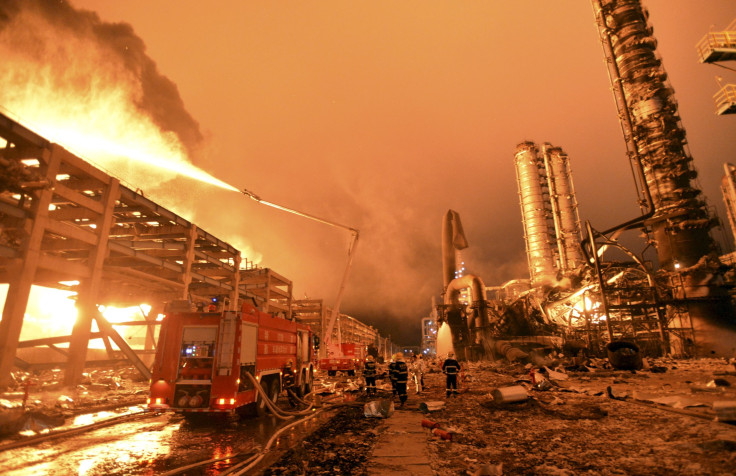China PX Chemical Factory Explosion Injures 6, Raising New Environmental Concerns

SHANGHAI -- Six people were reported injured when an explosion rocked a chemical factory in southeastern China, which has been the focus of long-term environmental concerns. More than 800 firefighters, many drafted in from surrounding cities, worked all night to contain the blaze, after several large oil and gas tanks caught fire at the Taiwanese-owned Dragon Aromatics PX factory in Zhangzhou, Fujian province.
However, by mid-morning on Tuesday, some sixteen hours after the blast, it was still burning. State TV showed smoke still pouring from the factory.
Local officials said those injured were being treated in hospital. All but one were residents hit by shards of glass caused by the explosion, which reports on social media said could be felt as far as 50 km (31 miles) away. One resident living 30 km from the site was quoted by China’s official news agency as saying it felt as if the blast had taken place "right next door."
More than 100 chemical hazard specialists and doctors from the regional military command were sent to the area overnight. On Tuesday morning, the Zhangzhou government announced at a news conference that there was no evidence of leaks or toxic pollution, and that the blaze was being contained. Officials said they would continue to monitor local water supplies, sea water and air quality.
The government’s swift response was clearly intended to reassure the public, following a series of controversies surrounding the factory, which produces paraxylene (PX), a product used in plastic bottles and man-made fibers which can be harmful if inhaled or absorbed by the human body. The factory was initially intended to be built in Xiamen, another city in Fujian, but became the target of one of China’s first major environmental protests in 2007, when local middle-class residents took to the street to oppose its construction.
It was later relocated to Zhangzhou, but an explosion soon after its opening in 2013 did little to reassure residents, even though officials said no one was hurt and the plant was only in trial operation at the time. In recent years there have also been protests in several other Chinese cities against plans to open PX plants -- notably in Kunming in 2013, and in Maoming in Guangdong province last year, when police fired teargas at protesters and several people were injured.
There is no doubt that PX has become a particularly toxic brand in China. A commentary published by Caixin media, one of China’s more independently minded media organizations, on Tuesday noted that some leading scientists said PX was actually less dangerous than many other types of chemicals commonly manufactured in China, but added that it had become the greatest focus of public concern.
The article said the real problem was that China’s safety departments, fire brigades, environmental departments and other authorities were not up to international standards. In particular, it said, the quality of parts used in such factories was often poor, and local governments and companies frequently failed to consult with and reassure the public properly.
China’s new Environment Minister Chen Jining said last month that PX products were “important industrial materials, so we should support those projects.” However, he promised tighter scrutiny and impact assessment for PX projects in future, and called on factories and local governments to give more information to the public.
Chemical factories have become a mainstay of many local government’s economies in China in recent years. However, a string of accidents in related industries -- including an ammonia leak at a refrigeration plant in Shanghai in 2013, which killed 15 people -- mean that there is likely to be a long way to go before the public is reassured.
© Copyright IBTimes 2024. All rights reserved.












